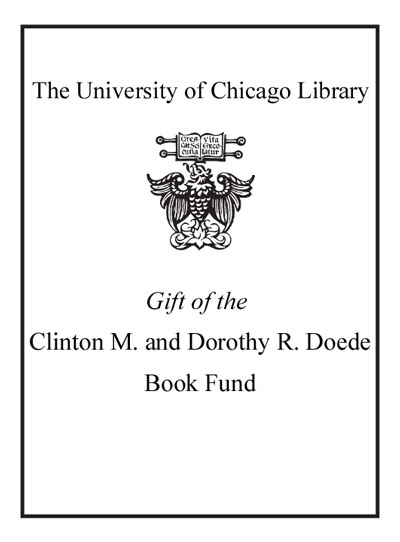Hidden Bibliographic Details
| Other authors / contributors: | Rangel, Gabriela, curator, editor, writer of supplementary textual content.
Anid, Audře, curator, writer of introduction.
Farías, Luis Felipe, editor, contributor.
Cohan, James H., writer of foreword.
Gaxiola, Luc̕a Hinojosa, translator.
James Cohan Gallery, publisher, host institution.
Distributed Art Publishers, distirbutor.
|
|---|
| ISBN: | 9798218240936
|
|---|
| Notes: | This catalogue was published in conjunction with the exhibition, Tecla Tofano : his body of mine, curated by Gabriela Rangel and Audře Anid and held at James Cohan Gallery, November 9-December, 2023
Includes bibliographical references (page 113).
"Tecla Tofano was born in Naples, Italy, on March 5, 1927. In 1952, she moved to Caracas, Venezuela, where she studied ceramics at the School of Plastic and Applied Arts. Tofano was an outspoken public intellectual and influential activist who taught at the Central University of Venezuela in Caracas from 1959 to 1980. Beginning in the 1960s, she wrote for the newspaper El Nacional and authored several books of fiction and poetry including Quien invent̤ la silla (Who Invented The Chair?), 1968 and Yo misma me presento (I Introduce Myself), 1974. Tofano presented her work in exhibitions at numerous galleries and institutions in Caracas including the Museo de Bellas Artes and the Galer̕a de Arte Nacional. She was awarded the Premio Oficial de Artes Aplicadas at the 19th Sal̤n Oficial, Museo de Bellas Artes (Caracas, 1958); gold medal at the International Exhibition of Contemporary Ceramics (Prague, 1961); and silver medal at the Exposici̤n Internacional de Cer̀mica (Buenos Aires, 1962). In recent years, Tofano's work has been featured in group exhibitions including the 2015-2016 exhibition, MODERNO, Design for living in Brazil, Mexico and Venezuela, 1940-1978 at the Americas Society, New York and the Blanton Museum of Art, Austin, Texas and the pivotal 2017 exhibition, Radical Women: Latin American Art, 1960-1985, which traveled from Hammer Museum, Los Angeles, to the Brooklyn Museum, New York and Pinacoteca de Ŝo Paulo, Brazil. Her ceramics were included in Cecilia Alemani's exhibition, The Milk of Dreams at the 2022 Venice Biennale. She is represented in the collections of Galer̕a de Arte Nacional, Caracas, Venezuela and the Museum of Fine Arts, Houston, Texas. Tecla Tofano died in Caracas on October 20, 1995."-- Biography from: https://www.jamescohan.com/exhibitions/tecla-tofano
|
|---|
| Summary: | "Tecla Tofano: This Body of Mine foregrounds Tofano as a critical figure in the history of feminist art and the broader canon of postwar global modernism. Curated by Gabriela Rangel and Audře Anid, this exhibition features over thirty ceramics from the 1960s and 70s as well as a selection of drawings from Evas al desnudo (Naked Eves), her series from 1972. Tofano channeled her ideas most notably through ceramics, though she was also an adept draftswoman, a metalsmith, and a voracious writer. In Rangel's words, "...the feminist impulse empowered her to examine, in both her art and writing, the female body as a tactical space of confrontation." Tofano's meditations in clay were often infused with her biting sense of humor, though they also maintained a poignant and personal undertone. The artist's initial foray into pottery in the 1950s began with throwing utilitarian objects on the wheel under the tutelage of Miguel Arroyo, a figurehead of Venezuela's nascent craft movement. By the 1960s and into the '70s, she shifted to hand-modeling body parts as well as domestic items ranging from food and books to totemic figures, flora, and fauna. Unabashed in her choice of subject matter, Tofano embraced ugliness, hand-modeling ceramics that celebrated the grotesque. Her visual language stood in direct opposition to a refined geometric abstraction and kineticism that was popular among her peers. Tofano embraced rough, hand-built surfaces, as evidenced in this exhibition's uncompromising works, which range from carved and extruding phalluses to disembodied tongues. The artist's work revealed the cracks in an extremist sociopolitical system in Venezuela, Tofano's home of over forty years. Her left-leaning activist views were a direct response to the volatile dictatorial climate that engulfed the country in the 1950s and to the oil boom of the 1960s and '70s. She embedded her work with social commentary to explore issues of class, gender construction and sexism. The female body is specifically addressed in Tofano's visual art and writing as an affront to pervasive machismo and a reflection of her personal traumas. Her suite of forty-four pencil drawings, Evas al desnudo (Naked Eves), 1972, for example, directly referenced social stigmas and expectations imposed on women, particularly those involving reproductive and domestic labor. In Tofano's narrative, Eve, the archetypal woman, is pictured in a multitude of scenarios, from the quotidian to the fantastical. Towards the end of the 1970s, Tofano felt that she had exhausted the possibilities of visual art and refocused her energy and activist rhetoric on writing. The titular phrase, "This Body of Mine3 is borrowed from Ep̕logos (Epilogues), her 1987 book of poetry. Tecla Tofano's corporeal ruminations across ceramics, drawings and writing underscore the artist's deeply-rooted commitment to vocalizing the unspoken paradoxes of womanhood and to rendering visible what was once considered taboo. To accompany this exhibition, James Cohan has published the first-ever monograph dedicated to the artist, co-edited by Gabriela Rangel and Luis Felipe Far̕as. It features an essay by Rangel, a detailed chronology by Far̕as, and translations of Tofano's poetry and writing by Luc̕a Hinojosa Gaxiola."-- Provided by Gallery
|
|---|

